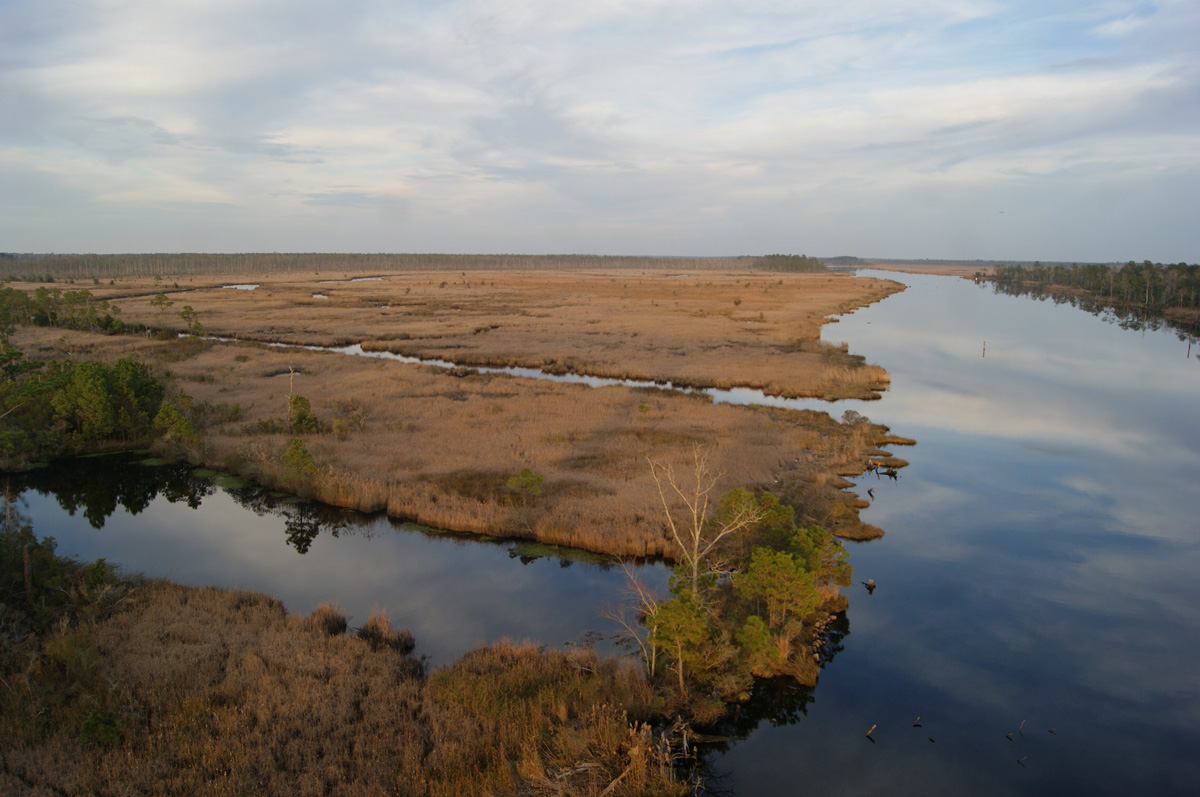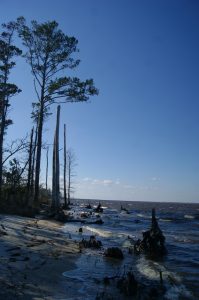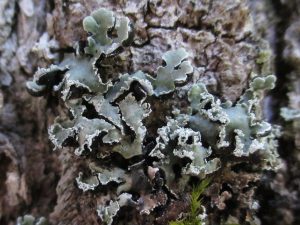Lichens Hold On Along America’s Vanishing Coast
Posted in Interesting Plant Stories on September 16, 2016 by Jessica Allen
Jessica L. Allen is studying for a Ph.D. as a student in the Commodore Matthew Perry Graduate Studies Program at The New York Botanical Garden. James C. Lendemer, Ph.D., is an Assistant Curator in the Institute of Systematic Botany at The New York Botanical Garden. Lichens are their primary research interest.

The Mid-Atlantic Coastal Plain is a close neighbor to some of America’s largest cities, including New York and Philadelphia, but you’d be forgiven if you had never heard of it. This vast, low-lying region extends along the Atlantic coast from southern New Jersey through South Carolina and includes such well-known cities as Charleston and Norfolk and beaches that are enjoyed by millions of visitors every year, such as the Outer Banks of North Carolina.

Scientists have long recognized it as an area that is rich in biodiversity, but also one that is dominated by impenetrable swamps and wetlands so foreboding that they were referred to as “dismals” by early explorers. That’s how the Great Dismal Swamp that spans the border of North Carolina and Virginia got its name.
Because of its unique ecosystems, many rare and unusual species call it home—such as the Venus Fly Trap, Dionaea multiscapa, which is native only to this region. In 2011 a group of scientists from The New York Botanical Garden set out on a mission to evaluate the lichens of the Mid-Atlantic Coastal Plain for the first time. After more than four years of studying the remaining natural habitats there, we have documented the existence of more than 500 species of lichens.
Like much of the rest of the eastern United States, the wilderness of the Mid-Atlantic has been severely reduced and fragmented as it has been used for agriculture, industry, and urban development. Since the time of George Washington, the forested swamps have been systematically ditched and drained to the point that only the wettest areas remain. By the first decade of the 21st century, only 12 percent of the area remained as natural habitat, mostly in a small number of large protected areas surrounded by farms, interstates, and urban sprawl.
While the changes of the last four centuries seem to have resulted in the decline or extinction of many species that occur in the area, this is not the whole story.

We have discovered two previously unrecognized hotspots of biodiversity in the two areas of this region where the largest amounts of protected land remain: the Albemarle-Pamlico Peninsula of North Carolina and the Francis Marion National Forest of South Carolina. We also documented new populations of many rare species, as well as described more than two dozen species as new to science.
Some of the newly discovered species are common and widespread, while others are threatened and occur on only a few islands or in swamps along one or two rivers. One newly discovered species is known almost entirely from a small area of swamps bisected by a highway proposed for expansion from two lanes to four lanes.
Despite centuries of change, lichens have managed to hold on and even thrive in a few remaining special places. But habitat loss continues, and climate change is causing sea levels to rise, claiming low-lying swamps. How long can the remarkable diversity we found persist along America’s vanishing coast?
Learn more:
Our Native Lichens: A Hidden World in Peril (Lecture filmed as part of the Science on the Sounds series of the University of North Carolina Coastal Studies Institute, 2014).
The Adaptors: Dollypartoniana and Other Lichens (Podcast about lichen research related to climate change, 2015).
Report on sea-level rise by the state of North Carolina
What Lichens are Telling Us (Episode of “Away to Garden” with NYBG’s Dr. James Lendemer, about lichens and their importance, 2015).
Mission Possible: NYBG Scientists Boost Conservation of Fungi (Science Talk post about fungal conservation, 2015).

